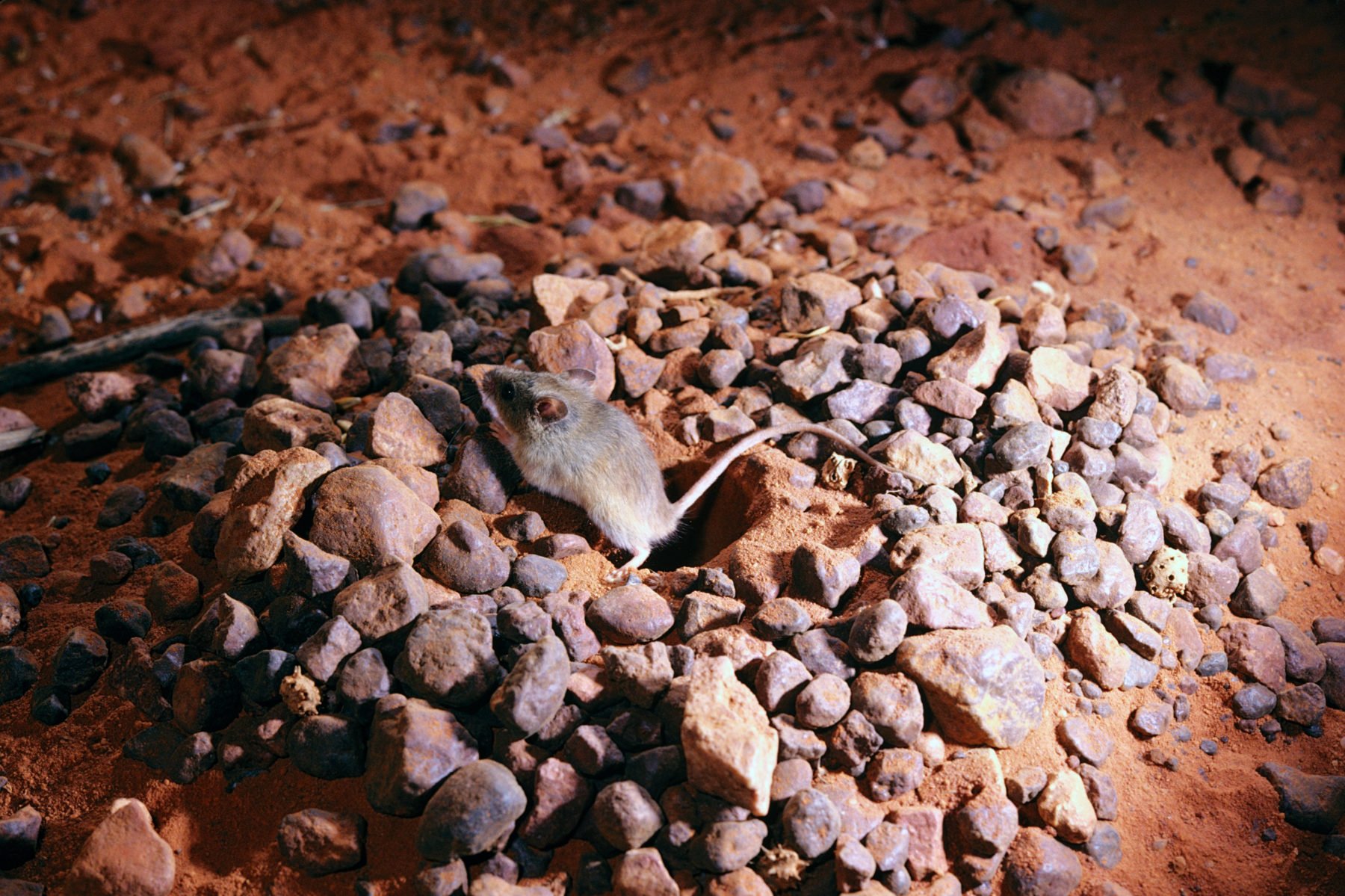The pebble-mound mouse is very good at its job

Bec Crew
Bec Crew

Named for its clever use of pebbles to create expansive rock formations around the entrance of their den, the pebble-mound mouse is one of Australia’s most elusive and unusual native rodents. Its fascinating mound-building behaviour not only helps to protect its burrow, but also supports its complex social life.
These pebble mounds are large, extending over areas of up to 10sq.m, consisting of some 50kg worth of pebbles. The mounds are estimated to contain thousands of pebbles, and can take several years to build.
As you can see here, the pebbles are most concentrated at the mouth of the burrow:

All that work doesn’t just benefit one mouse – these pebble mounds support entire communities of mice, including several litters of offspring. Scientists have recorded as many as 25 individuals sharing a single mound.
Here’s what a mound looks like, and as you can see, the pebble formations are quite expansive:

There are a handful of pebble-mound mouse species found in the open, arid parts of Australia. The one pictured above, the western pebble-mound mouse, or Ngadji (Pseudomys chapmani), is found only in the Pilbara, in Australia’s northwest, a region famous for its vast, mineral-rich red Earth.
There’s the Kakadu pebble-mound mouse (Pseudomys calabyi), which occurs mainly in the Northern Territory, and the eastern pebble-mound mouse (Pseudomys patrius), found in eastern Queensland (look at its adorable face).
The fourth known species is the central pebble-mound mouse (Pseudomys johnsoni), whose range runs through the Kimberley region of northern-most Western Australia to the central Northern Territory and into the westernmost regions of Queensland.
While these mice are highly adaptable and tough enough to live in such inhospitable conditions, out in the Australian desert, their numbers are dwindling due to habitat loss, predation, and other factors.
The good news is that, while they do look very similar to a common house mouse, the fact that they make their own dens means they don’t seek out our homes, so they are unlikely to come into contact with humans and traps in residential areas.
If you live in pebble-mound mouse territory and you’re worried about mistaking it for a house mouse, Bush Heritage Australia has posted a comment on its Facebook page, outlining the difference between the two.




